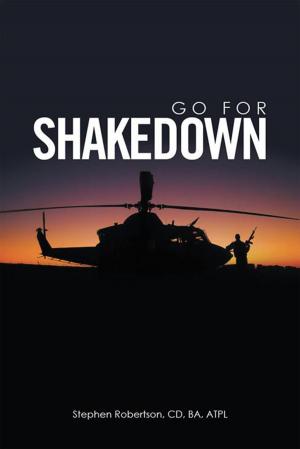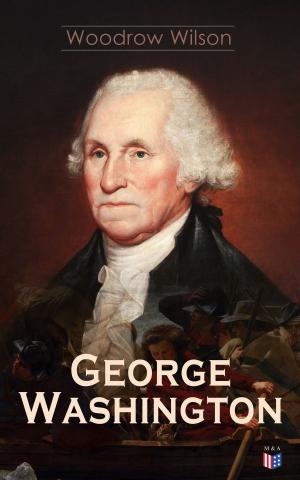| Author: | David Bradford | ISBN: | 1230000010703 |
| Publisher: | Aislinn Satu | Publication: | August 9, 2012 |
| Imprint: | Language: | English |
| Author: | David Bradford |
| ISBN: | 1230000010703 |
| Publisher: | Aislinn Satu |
| Publication: | August 9, 2012 |
| Imprint: | |
| Language: | English |
Now in my early fifties, I began reading about UFOs in the 1960s. The first book I read was Flying Saucers Serious Business by Frank Edwards. The book was impressive and taught me that the proof for the existence of Aliens from other worlds was substantial. The entire point of the book was for the author to present evidence to support various UFO cases as having something more than conventional explanations.
One reason I really enjoyed that book was because Frank Edwards was no slouch. He took over as a commentator and host on the Mutual Broadcasting Network replacing Edward R. Murrow, the legendary newsman and broadcaster. During an interview promoting the book he said that when he first decided to tackle the UFO subject, he decided to implement the three source rule that most reporters use to verify a story.
Edwards felt that if he could verify just one UFO incident using that rule, it would prove these objects were not just weather balloons and swamp gas. As it turned out, he found many UFO incidents that could easily be verified in that way. More importantly, he included a number of military encounters with UFOs in the book.
I got the impression that he wanted to drive home the point that, despite government statements to the contrary, members of the military and other trained observers were reporting things they saw on the land, in the sea and in the air that could not be easily identified or explained. Sadly, most of those kinds of reports were two long and complicated to make good copy for newspapers. It was easier to report that some good ole boy saw a pie plate attached to a bottle rocket and thought that Martians were invading our planet.
When the U.S. Air Force completed their Project Blue Book investigation of the UFO phenomenon in 1969-1970, it came as no surprise to me that 95% of the sightings were listed as explainable. It was a fast way to discredit UFO reports from civilians. I grew up in an Air Force family and my father was a retired officer, so I knew what the deal was.
The Air Force didn’t want to publicly discuss the subject of UFOs. Whatever was really going on was a big secret, possibly the biggest, and was going to be kept by a select few. The rest was all hearsay and conjecture. However, the Air Force hierarchy still hated being placed in a position to constantly comment on UFO reports. They hoped that Blue Book would solve that problem by allowing a time out for them to collect reports and have the evidence examined by scientific experts, but it didn’t. Instead, they found themselves saddled with a government study that created more questions than answers...
Now in my early fifties, I began reading about UFOs in the 1960s. The first book I read was Flying Saucers Serious Business by Frank Edwards. The book was impressive and taught me that the proof for the existence of Aliens from other worlds was substantial. The entire point of the book was for the author to present evidence to support various UFO cases as having something more than conventional explanations.
One reason I really enjoyed that book was because Frank Edwards was no slouch. He took over as a commentator and host on the Mutual Broadcasting Network replacing Edward R. Murrow, the legendary newsman and broadcaster. During an interview promoting the book he said that when he first decided to tackle the UFO subject, he decided to implement the three source rule that most reporters use to verify a story.
Edwards felt that if he could verify just one UFO incident using that rule, it would prove these objects were not just weather balloons and swamp gas. As it turned out, he found many UFO incidents that could easily be verified in that way. More importantly, he included a number of military encounters with UFOs in the book.
I got the impression that he wanted to drive home the point that, despite government statements to the contrary, members of the military and other trained observers were reporting things they saw on the land, in the sea and in the air that could not be easily identified or explained. Sadly, most of those kinds of reports were two long and complicated to make good copy for newspapers. It was easier to report that some good ole boy saw a pie plate attached to a bottle rocket and thought that Martians were invading our planet.
When the U.S. Air Force completed their Project Blue Book investigation of the UFO phenomenon in 1969-1970, it came as no surprise to me that 95% of the sightings were listed as explainable. It was a fast way to discredit UFO reports from civilians. I grew up in an Air Force family and my father was a retired officer, so I knew what the deal was.
The Air Force didn’t want to publicly discuss the subject of UFOs. Whatever was really going on was a big secret, possibly the biggest, and was going to be kept by a select few. The rest was all hearsay and conjecture. However, the Air Force hierarchy still hated being placed in a position to constantly comment on UFO reports. They hoped that Blue Book would solve that problem by allowing a time out for them to collect reports and have the evidence examined by scientific experts, but it didn’t. Instead, they found themselves saddled with a government study that created more questions than answers...















